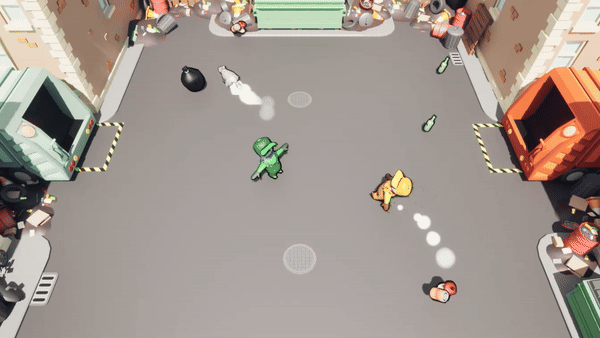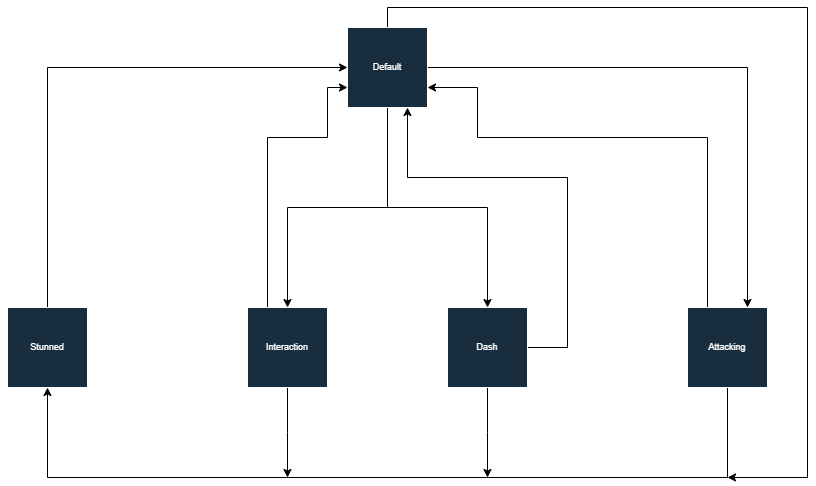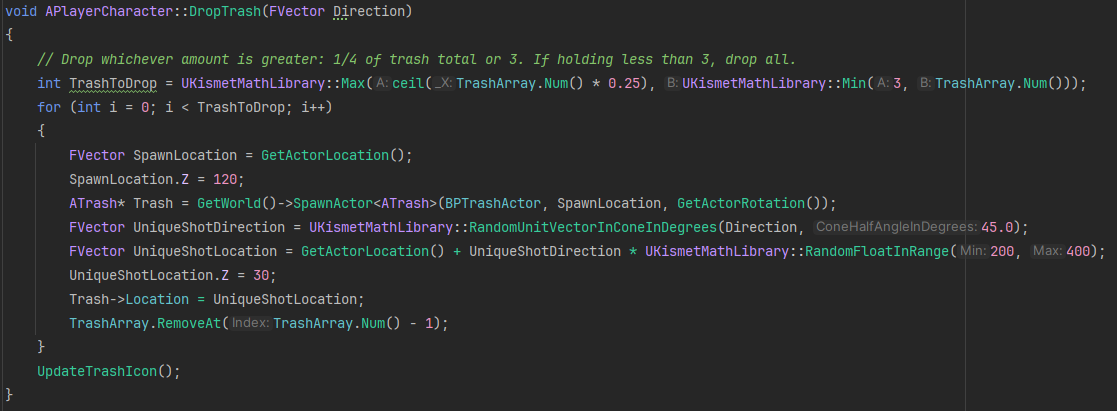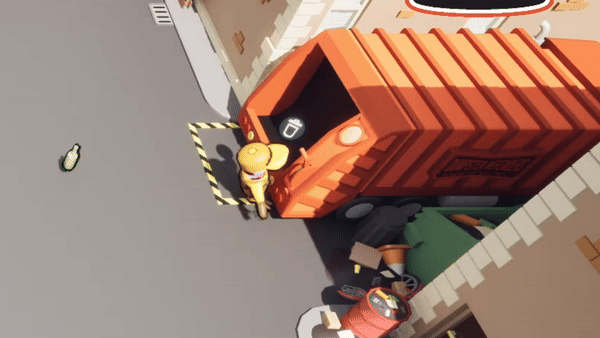Project Description
Cleanup Clash is a game jam project created alongside a team of eight others for Shawnee State University's 2024 Spring Jam. We had a week to submit the project, but most of my involvement took place over the final weekend as I spent the week getting ahead on assignments. The game is an arcade-style competitive multiplayer game built in Unreal Engine 5 and designed around the theme of "Trash". Players take on the role of workers representing two competing trash companies, tasked with proving that their company can clean up more trash quicker than the other can. My contribution to the project was the programming of player actions and implementation of animations.
Accomplishments
- Built a simple state machine for the player.
- Programmed the player's melee attack and dodge roll.
- Implemented animations for the dodge and lever pull actions.
- Managed the project in the run-up to the jam deadline and handled submission.

Objectives and Implementation

With the end of my senior semester approaching, my only goal with this jam was to have some fun and help the team realize whatever concept we came up with. My first task was to give the player a simple melee attack that caused players of the opposing team to briefly become stunned and drop a portion of their held trash. To help with this task, I first developed a simple state machine for the player. In other projects I've worked on, the team frequently struggled to manage a dozen distinct boolean variables to determine which actions a character can take at any time. By locking those actions behind specific current states out of a state enum instead, the code ends up being a lot easier to write and follow.

This code shows how I made the trash "explode" out of characters on hit. When coding this function, I discovered the very handy "RandomUnitVectorInConeInDegrees" function from the math library. This allowed me to generate a random direction in a 90 degree window behind the hit character, scale that direction by a random float between 200 and 400, and set the spawned Trash object to move towards the location at that point. By randomizing the direction and distance of the flying trash, a dynamic behavior is created that is much more interesting than the trash simply dropping at the character's feet. It also creates a bit of a spread between each dropped piece, forcing the players to scramble after each bit.

The trickiest task I had during this project was to sync the lever pulling animation produced by our animator with the lever pull interaction in game. A major piece of my solution was a trick that I learned while developing Isles of Aether: splitting the animation into two sequences. The first sequence, where the character jumps up to grab the lever, can play at a constant speed. The second, where the character is holding the lever and descending, needs to be played at a rate relative to the time remaining on the interaction. To help accomplish this, I learned about Montage Sections, which allow you to further divide an Animation Montage and set up or remove transitions between each Section. Using this tool, I was able to prevent the pulling section from playing automatically after the jump section. In code, after the jump section of the montage finishes playing, I could then immediately make a second call to play the Montage, this time beginning at the pull section and at the rate the section needed to be played at. This resulted in a smooth transition between the two sections and proved to be a very effective solution to the problem of needing a variable play rate.

Reflection
This jam was a blast to participate in. Not only was I working with my long-time programming teammates and friends, but we also had exceptional artist talent backing us up as well. The style and characterization they were able to add to this tiny project, in my opinion, elevates it far above the majority of projects I've participated in. Even with my limited participation, I managed to make important contributions to the project, learn a couple things, and get to know new people. Our team even had a very low number of version control issues and made the submission deadline with time to spare! Overall, the jam was an overwhelming success. It's very possible that we could pick up the concepts explored in this project and develop them further in a more ambitious commercial project.